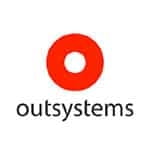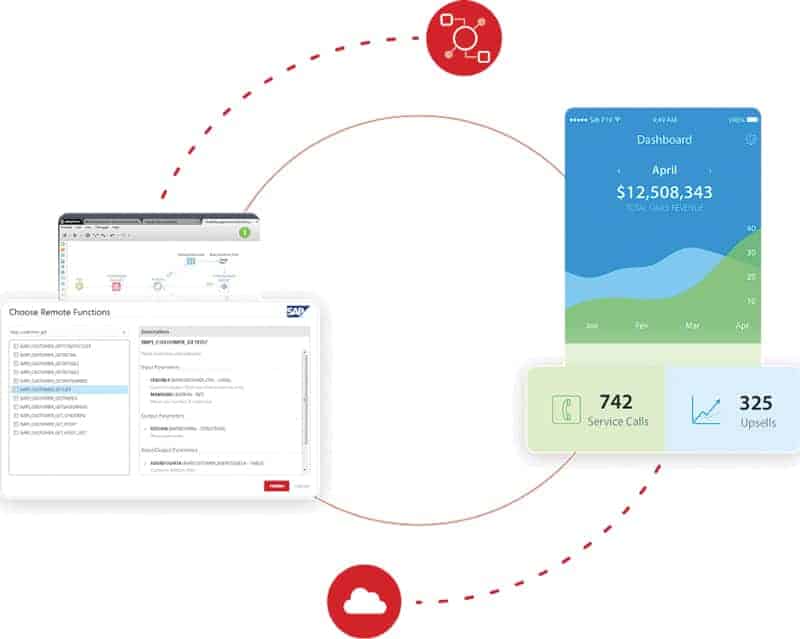Individual in SAP standard


Many existing SAP customers are considering following SAP's advice and returning to standard to simplify and accelerate the transformation to S/4 Hana. But is the price to be paid worth it? After all, the many individual customizations and in-house developments - Abap modifications in the Z namespace - in which so much has been invested to map and support the uniqueness of companies and their processes will be lost - an invaluable competitive asset.
E-3: Mr. Windheuser, back to the SAP standard while retaining individual customizations? How is that supposed to work?
Christoph Windheuser, OutSystems: At first glance, this may seem like an insurmountable contradiction - but in reality it is not. The core of our approach is as follows: The important individual customizations to a company's SAP solution are identified and then replicated externally in our low-code development platform. In this way, the customizations that can significantly slow down the transformation process to a new SAP generation, but also ongoing maintenance work or the import of security patches, are virtually outsourced. What remains is the largely clean SAP standard, which can then be migrated much more easily. On the other hand, by replicating the customizations using low-code, they can also be maintained and further developed much more easily and quickly in the future. The connection of the adaptations developed with low-code to SAP takes place via interfaces.

E-3: What interfaces does the OutSystems development system have to the Abap tables of an ECC 6.0, Hana and S/4?
Windheuser: The exchange between SAP and OutSystems is based on SAP Business Application Programming Interfaces, called BAPIs. For these, we offer numerous standard as well as user-defined SAP functions that users can access in our platform. This means that even complex SAP interface types can be mapped with easy-to-use parameters. All imported BAPI definitions are made available as visual elements. Users can then drag and drop them onto a graphical development interface and arrange them with additional logic parts as required. Abap tables, on the other hand, are made available as OData sources via the SAP Netweaver Gateway. Both variants are supported by SAP and described in the SAP Business Hub.
E-3: How is the release capability of the developments ensured?
Windheuser: Since the functions that use the interfaces are provided and thus also managed by our platform, they automatically remain up-to-date at all times. So as long as all SAP functions are called via the official interfaces, release capability is continuously ensured.
E-3: How and where are the developed apps executable? Stand-alone? In your own on-prem namespace? On the SAP BTP?
Windheuser: Applications developed with OutSystems can be run both in the cloud and on-premises. The development itself takes place in the OutSystems environment - which in turn is also deployed on-premises, as Infrastructure-as-a-Service, or in our managed OutSystems cloud with hosting via AWS. Incidentally, the latter variant is currently the most common. We do not provide support for hosting within the SAP Business Technology platform.
E-3: What runtime environments do the apps need for an SAP cloud installation at the hyperscalers?
Windheuser: Here we are maximally flexible. The OutSystems applications can be deployed as needed in any hyperscaler cloud environment, from Google to AWS to Azure or Alibaba.
E-3: Are there specific function calls for the Hana platform?
Windheuser: Access to the Hana platform is possible either via the Hana .Net interface or via OData services created with the Hana Modeler to provide Hana tables. The tables within the Hana database itself can then be accessed via Ado.Net on the one hand. On the other hand, it is possible to place an OData service layer on top of the table within the Hana Modeler. OutSystems then receives access via OData.
E-3: What reasons can be given for an existing SAP customer to stop programming in Abap and/or Java?
Windheuser: From my point of view, there are several reasons here. The first would be the payback period. In a full-stack visual development environment, applications can be developed, deployed, and maintained with a fraction of the effort that would have been required to build applications the traditional way. Second, applications can be delivered in a wide variety of client formats - from web to mobile apps - such as progressive web apps or native iOS or Android apps. And third, the shortage of skilled workers also plays a role: Abap developers are hard to find, hard to train, and ultimately hard to keep, regardless of the industry. Low-code development, on the other hand, is much more cost-effective and makes it possible for inexperienced developers to quickly create applications that use SAP data and processes.
E-3: What cooperations and certifications are there with SAP?
Windheuser: Our platform is fully certified for SAP and thus provides the required SAP connectors and integrations. All validations and security settings in SAP are inherited by the interfaces created in the OutSystems platform. To ensure that the integration logic works correctly in every case, the low-code platform tracks all transactions performed against SAP so that errors can be visually traced and corrected as needed.
E-3: Are there any significant differentiation criteria from other no-code/low-code platforms or the corresponding solutions from SAP?
Windheuser: In the end, only the customers can judge what makes us different. I will limit myself here to briefly describing what we can do: With our platform, we offer customers an independent solution. Among other things, this means that companies use our platform to generate real executable HTML, CSS, Java Script and .Net code that they can use independently of the OutSystems platform. This means that not only does our solution work without vendor lock-in, but it also gives users full access to the generated code and the ability to add and extend it with their own code as needed. This means that the respective application can be tailored to existing requirements without any restrictions. The interaction of applications with SAP via BAPIs is a native component of the OutSystems platform and thus enables users to integrate even complex applications into their SAP world. Developers are also flexible in terms of design and usability with OutSystems: They can design the "look and feel" of the solutions created exactly as the users want and need it.

E-3: Can OutSystems apps be managed with SAP SolMan?
Windheuser: In general, OutSystems is not part of the SAP ecosystem. Rather, application lifecycle management is done natively through our platform. However, various integration points are available that plug into the customer's existing continuous integration or continuous delivery pipeline.
E-3: Is there a test management and transport system for OutSystems apps to go live?
Windheuser: Yes, there is. We offer native transport management between the customer's development, test processes and the productive environment. If additional environments are needed, they can be added at any time.
E-3: What are the benefits for SAP customers beyond replacing customizations?
Windheuser: Beyond the customizations, additional customer and employee-oriented business processes and business logics can be flexibly developed outside of SAP at any time using low-code or built on top of SAP processes to increase user-friendliness or automate processes for employees, for example. An example of this would be supplementary mobile apps for field service or special portals for suppliers. In this way, users continue to benefit from the reliability and security of established SAP processes, while at the same time the requirements of today's users for user-friendliness and flexibility are met.
E-3: Doesn't that amount to replacing SAP in the long term?
Windheuser: Being able to stand out from the competition flexibly and quickly with individual services and apps is a decisive competitive advantage in the digital economy. This is especially true in the German-speaking world, where the shortage of skilled workers will continue to grow, even in the SAP environment. However, this does not mean that the heart of corporate IT will become superfluous. And for the vast majority of companies, this heart beats in SAP, now and in the future. OutSystems helps to keep it fit. That is our role. Many existing SAP customers no longer need many of the old company codes and business objects in S/4. Why should they continue to drag that burden along with them? Lean, agile and individual is the future. The return to the SAP standard in combination with our low-code platform is the right way into this future.
E-3: Thank you for the interview.





